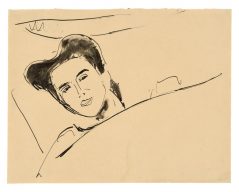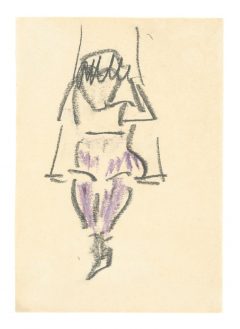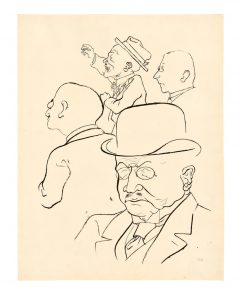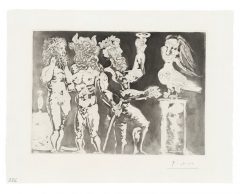Kupferstichkabinett Berlin:
"Rescued Modernism – Masterpieces from Kirchner to Picasso"
February 02 - April 21, 2024
In 1937, large numbers of Modernist works of art were removed from Berlin’s Kupferstichkabinett as part of the Nazis’ nationwide campaign against “Degenerate Art”. The curator of the museum at the time, Willy Kurth (1881–1963) , made courageous efforts to save hundreds of works from being destroyed. Drawing on the 2023 publication Die Aktion “Entartete Kunst” 1937 im Berliner Kupferstichkabinett by Anita Beloubek-Hammer, this exhibition gathers together a selection of key works to reveal what these campaigns were able to save in 1937. The show also features works by Max Beckmann, Otto Dix, George Grosz, Erich Heckel, Ernst Ludwig Kirchner, Wassily Kandinsky, Käthe Kollwitz, Henri Matisse, Edvard Munch and Pablo Picasso, illustrating the impressive breadth of the museum’s collection of Modernist art at the time.
Featuring some 95 carefully selected works, this exhibition highlights the scope of what was so courageously saved from oblivion in 1937, both in terms of single sheets and portfolios of graphic art. Many of the works that today are considered to be among the best produced by these artists were confiscated from German museums and then sold on foreign markets, often to obtain foreign currency. Through the quality and quantity of the works on display, the exhibition also makes evident the outstanding profile the Berlin Kupferstichkabinett enjoyed at the time when it came to Modernist art, which then had to be painstakingly rebuilt after the Second World War, both in the East and West alike.
The 1937 “Degenerate Art” Campaign at Berlin’s Kupferstichkabinett
In the summer of 1937, large numbers of Modernist artworks were removed from Berlin’s Kupferstichkabinett as part of the Nazis’ nationwide campaign, which targeted “degenerate art” that needed to be “extirpated”. On 7 July, in the lead-up to the Degenerate Art sham exhibition that opened 12 days later in Munich, the collection lost over 100 works in a wave of confiscations, including items by Max Beckmann, Otto Dix and Emil Nolde.
When an even larger campaign of expropriations was carried out on 14 and 16 August of the same year – a campaign that ultimately affected more than 700 works – the curator of the museum at the time, Willy Kurth, was able to save particularly important groups of works by a number of major artists. Putting himself at great risk, he strategically swapped works of graphic art, all behind the back of the director of the museum, Friedrich Winkler, who collaborated with the Nazi regime. Through these efforts, Kurth was able to keep hundreds of works in the collection, often hidden in other areas of the collection. While portraits of artists and coloured prints were saved, Kurth “sacrificed” a great many landscapes and works by less significant artists.
This special exhibition comes in the wake of the 2023 publication Die Aktion “Entartete Kunst” 1937 im Berliner Kupferstichkabinett (Lukas Verlag, Berlin) by Anita Beloubek-Hammer, the long-serving curator of modern art at Berlin’s Kupferstichkabinett. This extensive publication was initiated and generously funded by the Ferdinand-Moeller-Stiftung, Berlin.
Curator
Rescued Modernism: Masterpieces from Kirchner to Picasso was curated by Andreas Schalhorn, curator of modern art at the Kupferstichkabinett.
Media partners: ARTE, tipBerlin
A special exhibition of the Kupferstichkabinett – Staatliche Museen zu Berlin



